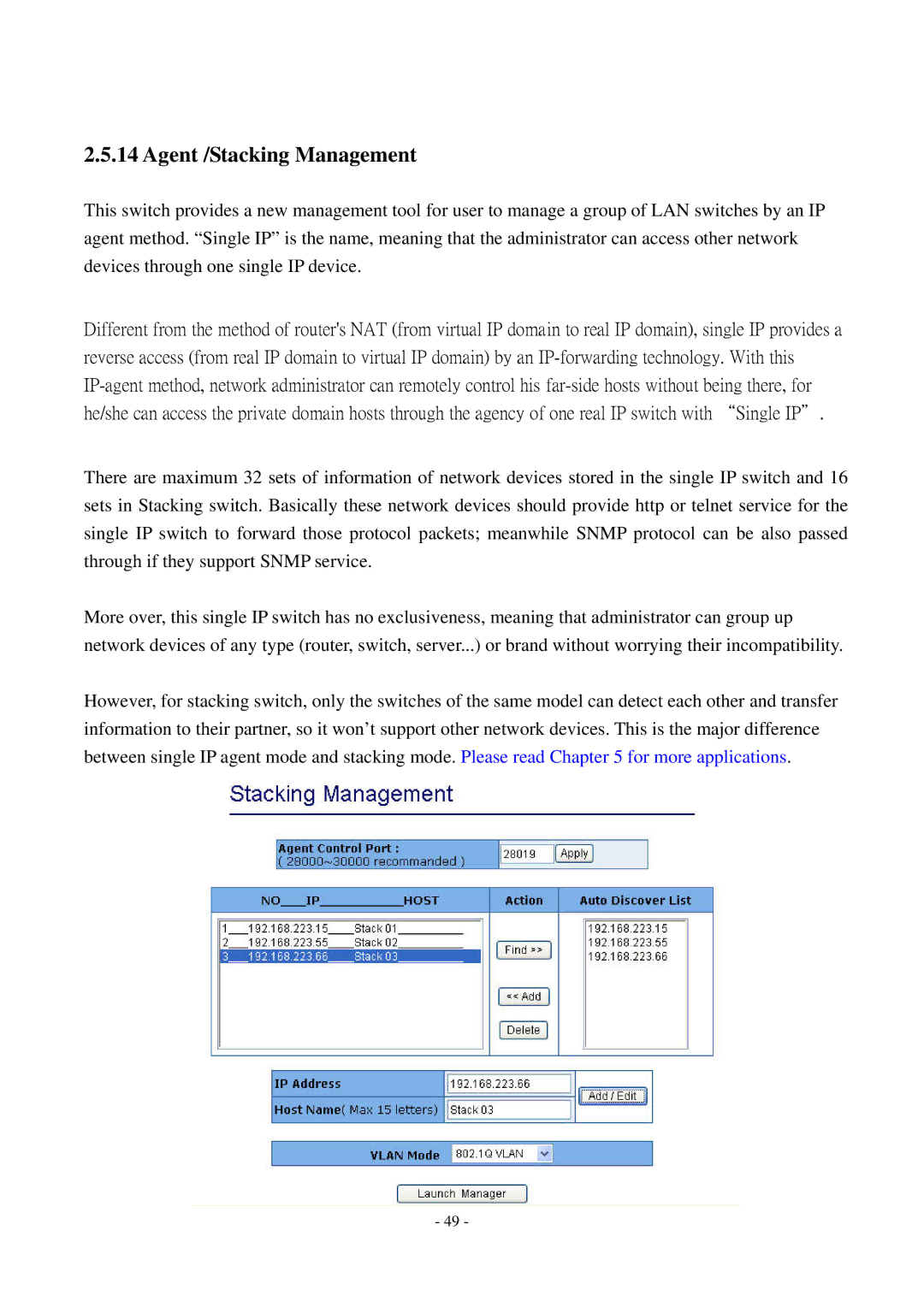
2.5.14 Agent /Stacking Management
This switch provides a new management tool for user to manage a group of LAN switches by an IP agent method. “Single IP” is the name, meaning that the administrator can access other network devices through one single IP device.
Different from the method of router's NAT (from virtual IP domain to real IP domain), single IP provides a reverse access (from real IP domain to virtual IP domain) by an
There are maximum 32 sets of information of network devices stored in the single IP switch and 16 sets in Stacking switch. Basically these network devices should provide http or telnet service for the single IP switch to forward those protocol packets; meanwhile SNMP protocol can be also passed through if they support SNMP service.
More over, this single IP switch has no exclusiveness, meaning that administrator can group up network devices of any type (router, switch, server...) or brand without worrying their incompatibility.
However, for stacking switch, only the switches of the same model can detect each other and transfer information to their partner, so it won’t support other network devices. This is the major difference between single IP agent mode and stacking mode. Please read Chapter 5 for more applications.
- 49 -
